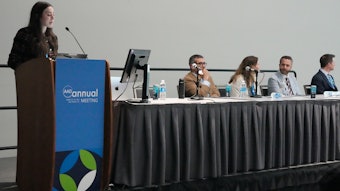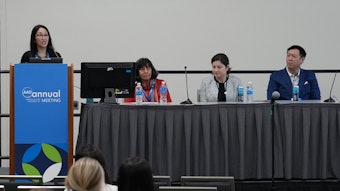Frontal fibrosing alopecia misunderstood and rising
The push for research and treatment is on.

F033 – Unraveling Frontal Fibrosing Alopecia: Current Landscape and Challenges
3:30-5:30 p.m. | Friday, March 8
Location: Room 6F
Frontal fibrosing alopecia (FFA) — first described in postmenopausal women in the mid-1990s — has since expanded to include men and premenopausal women. Considered a misunderstood disease, FFA rates are rising across the globe, and epidemiologic research in FFA has been hampered by not having an ICD-10-CM code.

“In the past few decades, there has been an increase in the number of FFA cases, particularly in Western countries,” said Dr. Hordinsky. “This has led investigators to look for environmental triggers, such as in cosmetic products, as well as the possibility of hormonal disruption by endogenous or exogenous factors, including dioxins. In its early presentation, FFA may appear as androgenetic alopecia or alopecia areata. The correct diagnosis may not be readily apparent for a variety of reasons, including not pulling the hair back during the clinical examination to expose not only the recession of the frontal hair line but also the characteristic perifollicular erythema and scale seen in FFA.”
Getting it right
Dr. Doche said even normal-appearing areas of the scalp may be affected and the condition can be seen in the lower occipital scalp. Often, she said, if the hair is not pulled up to examine this region, the diagnosis may be missed. Dr. Hordinsky added that FFA can occur with other hair diseases, such as female or male androgenetic alopecia.
An accurate FFA diagnosis can be difficult, Dr. Doche said, because it shares many histologic features with the scarring alopecia lichen planopilaris (LPP), and it is still considered by many to be a variant of LPP. However, clinical and pathological differences have now been identified. Genetics can be a contributing factor as well. The average age of onset of FFA has typically been between 56 and 66 years of age, but it is now presenting in younger adults.
Halt the inflammation
Treating the condition is a multistep approach.
“At the first visit, the primary goal is to stabilize the disease process,” Dr. Hordinsky said. Dr. Doche concurred. “Once the disease has been stabilized, hair growth-promoting medications and devices can be recommended to try to regrow hair. Treatments for FFA include anti-inflammatory and immunosuppressant drugs, such as hydroxychloroquine, corticosteroids, and doxycycline, topical medications, and intralesional steroids,” Dr. Doche said. “New approaches such as platelet rich plasma (PRP), phototherapy, lasers, oral minoxidil, topical gabapentin, and low-dose naltrexone have been used with varying results. Antiandrogens such as dutasteride have also been found to be beneficial to some patients.”
According to Dr. Doche, patient follow-up is one of the most challenging parts of the medical approach. Videodermoscopy or handheld dermoscopy of the scalp (also known as trichoscopy) can be extremely helpful, especially in the early stages of the disease, to better evaluate subtle signs of inflammation as redness, scaling, and fractured hairs. Measuring hair line recession using technologies such as Hair Metrix (Canfield Scientific) or Fotofinder can be useful to establish a baseline of disease extent and inflammation. That allows dermatologists to engage with the patient and evaluate the course of treatment.
Tier 1 treatments
- Topical, high-potency corticosteroids/intralesional steroids
- Topical, non-steroid anti-inflammatory creams (tacrolimus, pimecrolimus, JAK inhibitors)
- PBM phototherapy
Tier 2 treatments
- Hydroxychloroquine
- Low-dose antibiotics for anti-inflammatory effect
- Acitretin
Tier 3 treatments
- Cyclosporine
- Mycophenolate mofetil
- Prednisone
- Oral PPAR-y-agonist, pioglitazone hydrochloride
- JAK inhibitors
The need for more research
Small research studies with topical or oral JAK inhibitors are currently underway and results are pending, according to Dr. Hordinsky. However, FFA research has been challenging in the U.S. as the condition lacks its own ICD-10 code.
“This is now changing with the recent efforts of a group of dermatologists, some current dermatology residents, and medical students. There will now be a code for this disease in October 2024,” Dr. Hordinsky said.
Other FFA research on neurogenic inflammation as well as the study of the immune target on the hair follicle continues, Dr. Doche said. However, she urged more clinical research as this is a unique disease, and more patients are being diagnosed.
Finally, Dr. Doche encourages dermatologists to understand and address the psychological aspects in the management of this disease.












